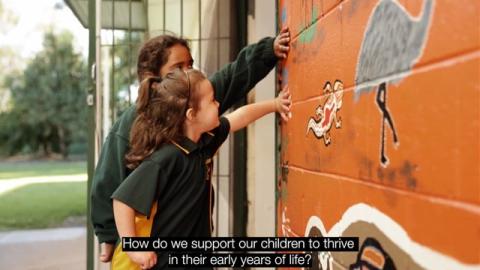“Transitions, in the early childhood context, are defined as: The process of moving between home and childhood setting, between a range of different early childhood settings, or from childhood setting to full-time school.”
Early Years Learning Framework

Download the Successful Transition printable resource
Curriculum
Early Years Learning Framework (ELYF)
- Children have a strong sense of identity
- Children are connected with and contribute to their world
- Children have a strong sense of wellbeing
- Children are confident and involved learners
- Children are effective communicators
Australian Curriculum Aboriginal and Torres Strait Islander Histories & Cultures
NSW English and Mathematics Syllabus
- Communicates effectively by using interpersonal conventions and language with familiar peers and adults. (ENE-OLC-01)
- Understands and responds to literature read to them. (ENE-UARL-01)
- Demonstrates an understanding of how whole numbers indicate quantity. (MAE-RWN-01)
- Reads numerals and represents whole numbers at least to 20. (MAE-RWN-02)
- Communicates ways to be caring, inclusive and respectful of others. (PDe-3)
Kindergarten orientation and transition advice (NSW Department of Education)
Families
Read (2 mins)

Successful transitions in the early years are more likely when they happen in partnership with educational settings.
Transitions aren’t one-off or sudden events. They happen over a long period of time as students journey through phases of their life. During early years transition it’s important that your child has the opportunity to:
- Engage in familiar activities
- Be social and make connections
- Get to know their new learning environment
- Know that there are people there to help them
- Build on their prior & current experiences
- Families & schools should work together to help children feel secure, confident and connected
Explore (10 mins)

Some ideas for learning in the everyday:
- Attend a school orientation or transition to school program at your new school.
- Talk to your child about their feelings on the first days of school – discuss what to do if your child feels sad, worried, nervous?
- Read books about starting school (e.g. Starting School by Janet Ahlberg).
- Practise writing and recognising their name.
- Practise putting on their school uniform.
- Practise packing items into their school bag.
- Practise opening all the items in their lunch box.
Books to support transition:
Teachers
Reflect (30 mins)

Reflect on your knowledge and practice. Consider the EYLF, NSW Syllabus and LPs:
- Where have these children come from?
- Where are you taking them?
Think about the learning that happens in your classroom that builds the knowledge and skills for a successful transition to the classroom.
What do you expect from the early learner?
What do you want parents to know about transition?
In what other settings might a child experience transition? (i.e.not just from an ELC to K classroom)
How will you use transition to know more about a child’s literacy and numeracy development?
This is an opportunity to share what successful transitions looks like in your classroom. Also you may consider transitions that happen throughout the school day.
Engage (45 mins)

Engage in a learning conversation with parents. Suggested conversation starters:
- Is there anything in the video that challenged your thinking
about learning and the connection with transition? - What foundational skills do you see in the video that would
assist with a successful transition? - How are the children:
- Practising their skills?
- Testing their ideas?
- Building their knowledge?
- What opportunity can you create, or do you have at home that supports your child’s transition journey?